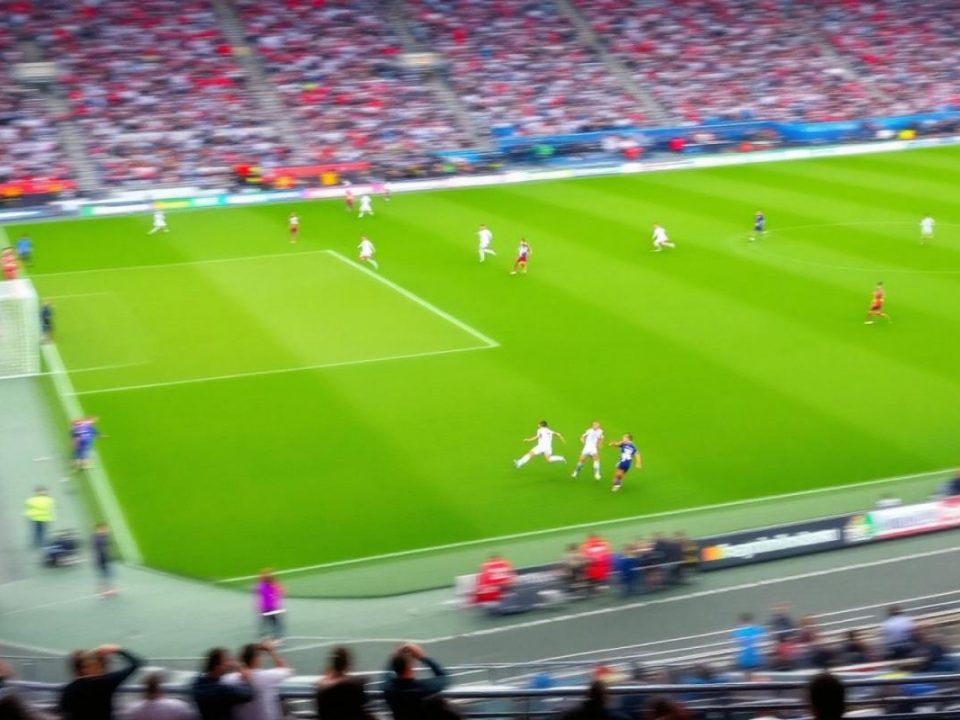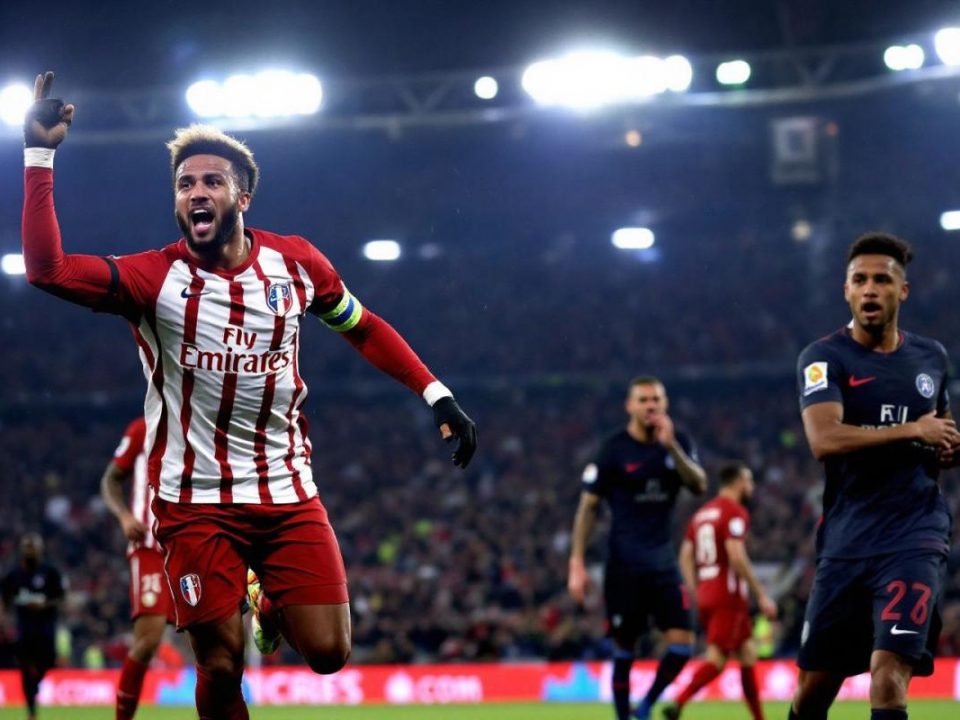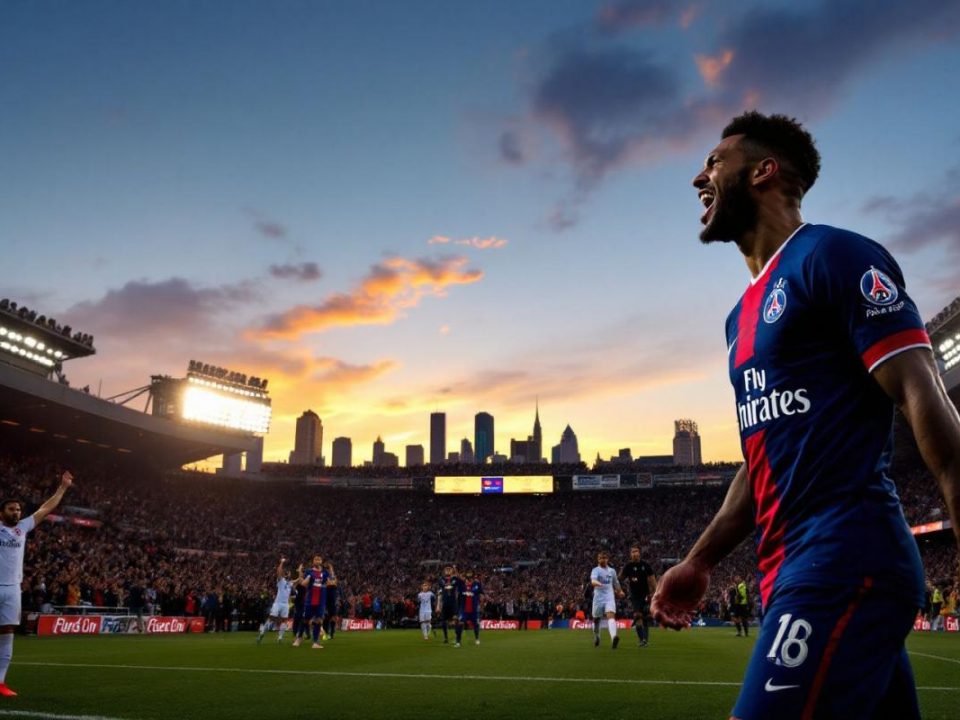DAZN’s massive losses on Ligue 1 TV rights plunge French football into uncertainty

Serie A Champions League race : teams battling for European spots with 7 matchdays left
6 April 2025
Real Madrid’s struggle : analyzing the consecutive defeats that shook the Spanish giants
7 April 2025The financial saga surrounding DAZN’s acquisition of Ligue 1 TV rights has escalated into a full-blown crisis for French football. The British streaming platform faces staggering losses between €200-250 million in its first season broadcasting France’s top football division, throwing the entire economic model of French clubs into disarray.
In Short
| Key issues | Impact and implications |
|---|---|
| Financial crisis in French football’s broadcast deal | DAZN faces losses of €200-250 million in first season broadcasting Ligue 1 |
| Subscription shortfall undermines business model | Fan adoption rates falling dramatically short of projections needed for sustainable operation |
| Payment disputes between DAZN and LFP | Broadcaster demanded €573 million compensation while withholding contractual payments to the league |
| Communication breakdown between stakeholders | Described as “dialogue of the deaf” with DAZN demanding improved marketing and presentation |
| Legal escalation threatens long-term stability | LFP filed suit after DAZN paid only half of its rights bill |
| Clubs’ financial planning in jeopardy | Uncertainty affecting transfer plans, contract negotiations and operational budgets across Ligue 1 |
Financial disaster unfolding in French football’s broadcast deals
The current standoff between DAZN and the Professional Football League (LFP) has reached unprecedented levels of tension. Far from the optimistic forecasts when the deal was signed, DAZN now finds itself hemorrhaging funds at an alarming rate. According to information revealed by the court-appointed mediator and first reported by L’Équipe, the streaming giant is projected to lose between €200-250 million this season alone.
This financial disaster stems from a fundamental mismatch between subscriber projections and reality. While precise figures remain closely guarded, industry experts point to subscription rates falling dramatically short of DAZN’s business model requirements. The platform’s ambitious expansion into the French market appears to have been based on overly optimistic projections about football fans’ willingness to adopt yet another streaming service.
The severity of the situation prompted DAZN to demand €573 million from the LFP in compensation, citing “deception regarding the merchandise” and “observed failures” in the league’s delivery of promised value. This extraordinary sum represents more than a full season’s worth of broadcast payments, highlighting the depth of DAZN’s financial concerns.
What makes this situation particularly alarming for French football is its timing. With the current season set to conclude on May 15, 2025, clubs face enormous uncertainty about their financial futures. TV rights represent the largest revenue stream for most teams, and this instability comes at a critical moment when clubs must make personnel and transfer decisions for the upcoming season.
Communication breakdown between stakeholders threatens future broadcast arrangements
What began as a potential mediation has devolved into what one insider described as “a dialogue of the deaf.” DAZN executives have consistently urged clubs and the LFP to work harder at enhancing the Ligue 1 product, improving marketing, scheduling, and overall presentation of matches. Their frustration centers on what they perceive as insufficient efforts to maximize the league’s commercial appeal.
The LFP’s response has been equally emphatic, essentially telling DAZN to fulfill its contractual obligations or exit while leaving substantial compensation. “Get out and leave a €200 million check in the till before leaving,” is how one source familiar with the negotiations characterized the LFP’s position. This hardline stance reflects the league’s desperate need to secure funding for its member clubs.
In a dramatic development, DAZN France’s CEO addressed the crisis in a live statement, defending the company’s position while acknowledging the severity of the situation. The public nature of this dispute has only intensified pressure on all parties to find a resolution before the current season ends.
Adding another layer of complexity, former M6 Group CEO Nicolas de Tavernost has been called in by the LFP to help navigate this crisis. Tavernost’s experience in media rights and broadcasting brings valuable expertise, but even his involvement hasn’t yet bridged the substantial gap between the parties’ positions.
Payment disputes escalate as Ligue 1’s broadcast future hangs in balance
The financial complications have manifested in increasingly concerning payment issues. In an alarming development earlier this year, DAZN threatened to withhold its February payment for Ligue 1 rights, raising serious questions about the viability of the broadcast agreement. This prompted immediate concern among clubs that had already budgeted based on expected television revenue.
As the situation developed, DAZN ultimately paid only half of its Ligue 1 TV rights bill, leading the LFP to file suit for non-payment. This legal escalation marks a significant deterioration in relations between the broadcaster and the league, with potential long-term implications for how future rights deals are structured.
For clubs across France’s top division, this uncertainty creates a precarious situation. Transfer plans, contract negotiations, and operational budgets all depend heavily on anticipated broadcast revenue. The instability threatens to undermine competitive balance within the league, as teams may be forced to sell key players or reduce investments in youth development and infrastructure.
Football analysts are now speculating about potential outcomes, including the possibility of emergency broadcast arrangements, renegotiated terms, or even legal battles that could extend well beyond the current season. What remains clear is that French football stands at a crossroads, with the resolution of this dispute likely to shape the financial landscape of the sport for years to come.
As clubs and fans anxiously await developments, the broader implications extend to betting markets and financial projections across the football ecosystem. The volatility creates both risks and opportunities for those closely following the French football landscape, with potential ripple effects throughout the European football economy.




